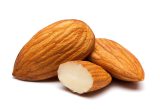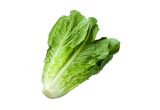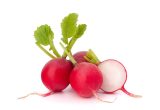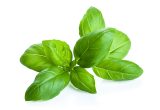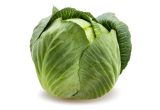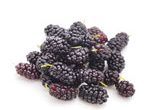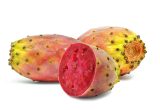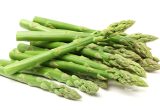Zucchini

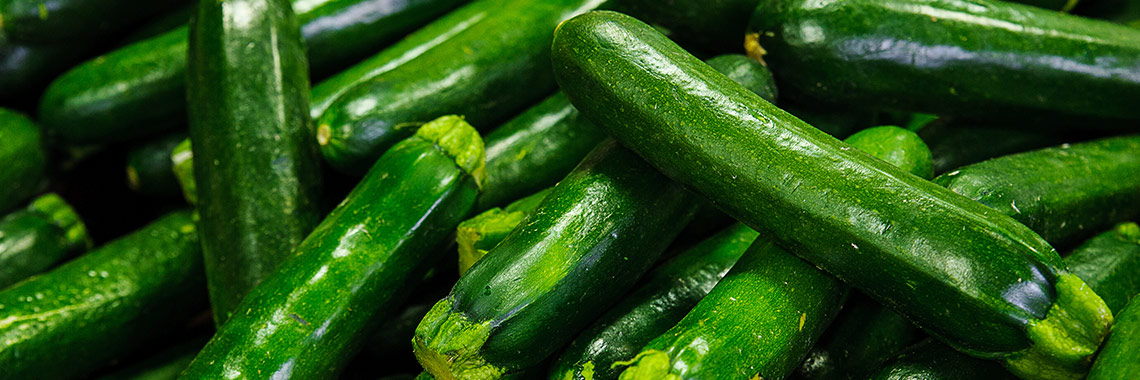
Description
- Zucchini (Cucurbita pepo subsp. ovifera) belongs to the Cucurbitaceae family (Xanthopoulou, 2019).
- Native to Mexico, the pepo subspecies includes squashes, pumpkin and cocozelle (Xanthopoulou, 2019).
- Also called “summer squash”, the zucchini has the particularity of being harvested very young. In France, there are several varieties such as the Ronde de Nice, the Grisette de Provence, the Blanche de Virginie and the Goldrush (Les fruits et légumes frais)
PHYSICAL AND ORGANOLEPTIC CHARACTERISTICS
- Zucchinis are consumed while not yet ripe (Xanthopoulou, 2019).
- Ripe zucchini can be up to 1 m long and the larger ones are often fibrous (Sood, 2017). They can be found in different colours: dark green, slightly lighter and very light, as well as yellow-orange (Sood, 2017).
- Yellow zucchini contains xanthophyll pigments responsible for its colour (Yasuoka, 2018).
- A study has shown a greater presence of carotenoids in the skin than in the flesh of fruits belonging to the Cucurbitaceae family, including zucchini, which explains the more intense colour of the skin and the much lighter colour of the flesh (Obrero, 2013)
COMPOSITION CHARACTERISTICS (excluding macronutrients, vitamins and minerals)
- Zucchini contains significant amounts of natural antioxidants such as β-carotene, folic acid and vitamin C (Sood, 2017).
- High levels of carotenes and vitamin C give zucchini stimulating properties (Iosypenko, 2019).
- Its seeds are also reported to contain traces of anticancer substances, called protease trypsin inhibitors, which inhibit the activation of viruses and carcinogens in the human digestive tract (Sood, 2017).
Epicarps of zucchini have higher carotenoid levels than the rest of the fruit. The darker the colour of the zucchini, the higher the carotenoid level (Iosypenko, 2019).
RAW
The following values are approximate and depend on variety, season, ripeness, cultivation conditions, etc. Raw zucchini is low in energy* because it provides on average 16.50 calories (kcal) for 100 g, i.e. 69.40 kJ. One zucchini weighs on average 250 g, which represents an energy intake of approximately 41.25 kcal.
COMPOSITION TABLES
For each nutrient, the tables provide information on the content, the minimum and maximum values, as well as the percentage of the Dietary Reference Values (DRVs) for 100 g net of raw courgette (pulp and skin).
*Regulation (EC) No 1924/2006 of the European Parliament and of the Council of 20 December 2006 on nutrition and health claims made on foods.
MACRONUTRIENTS
| Constituent (g) | Average content |
Min-Max per 100g |
DRV% |
|---|---|---|---|
| Water | 94,70 | 93,30 - 95,80 | - |
| Fibers | 1,05 | 0,70 - 1,60 | - |
| Carbohydrates | 1,80 | - | 0,69 |
| Sugars | 1,79 | NC - 2,50 | 1,99 |
| Lipids | 0,26 | 0,10 - 0,45 | 0,37 |
| Saturated fat | 0,061 | 0,038 - 0,084 | 0,31 |
| Protein | 1,23 | 0,10 - 1,50 | 2,46 |
| Constituent (g) | Amount | Min-Max | DRV% |
|---|---|---|---|
| Water | Ciqual 2020 | - | - |
| Fibers | Ciqual 2020 | - | - |
| Carbohydrates | Ciqual 2020 | - | Réglement (UE) n°1169/2011 du parlement Européen et du conseil du 25 octobre 2011 |
| Sugars | Ciqual 2020 | - | Réglement (UE) n°1169/2011 du parlement Européen et du conseil du 25 octobre 2011 |
| Lipids | Ciqual 2020 | - | Réglement (UE) n°1169/2011 du parlement Européen et du conseil du 25 octobre 2011 |
| Saturated fat | Ciqual 2020 | - | Réglement (UE) n°1169/2011 du parlement Européen et du conseil du 25 octobre 2011 |
| Protein | Ciqual 2020 | - | Réglement (UE) n°1169/2011 du parlement Européen et du conseil du 25 octobre 2011 |
Zoom on carbohydrates
- The carbohydrate content of raw zucchini (1.80 g per 100 g) is lower than the average for raw vegetables (4.45 g per 100 g).
- Raw zucchini is low in sugar* (1.79 g per 100 g) as it contains no more than 5 g per 100 g.
Zoom on fibres
- The amount of fibre in raw zucchini (1.05 g per 100 g) is lower than the average quantity in raw vegetables (2.43 g per 100 g).
Zoom on proteins
- The protein content of raw zucchini (1.23 g per 100 g) is lower than the average amount found in raw vegetables (1.87 g per 100 g).
Zoom on lipids
- The fat content of raw zucchini (0.26 g per 100 g) is lower than the average amount found in raw vegetables (0.56 g per 100 g)
- Raw zucchini is fat-free* as it contains less than 0.5 g per 100 g.
*Regulation (EC) No 1924/2006 of the European Parliament and of the Council of 20 December 2006 on nutrition and health claims made on foods.
MINERALS AND TRACE ELEMENTS
| Constituent | Average content |
Min-Max per 100g |
DRV% |
|---|---|---|---|
| Calcium (mg) | 18,70 | 10 - 28,60 | 2,34 |
| Chloride (mg) | - | - | - |
| Copper (mg) | 0,052 | 0,046 - 0,069 | 5,20 |
| Iron (mg) | 0,36 | 0,30 - 0,45 | 2,57 |
| Iodine (µg) | 1,64 | 1,30 - 2,30 | 1,09 |
| Magnesium (mg) | 17,50 | 15 - 23 | 4,67 |
| Manganese (mg) | 0,18 | 0,11 - 0,33 | 9 |
| Phosphorus (mg) | 44,70 | 32 - 66,50 | 6,39 |
| Potassium (mg) | 262 | 227 - 290 | 13,10 |
| Selenium (µg) | 0,58 | NC - 1,49 | 1,05 |
| Sodium (mg) | 9 | 0 - 53 | - |
| Zinc (mg) | 0,31 | 0,23 - 0,51 | 3,10 |
| Constituent | Amount | Min-Max | DRV% |
|---|---|---|---|
| Calcium (mg) | Ciqual 2020 | - | Réglement (UE) n°1169/2011 du parlement Européen et du conseil du 25 octobre 2011 |
| Chloride (mg) | Ciqual 2020 | - | Réglement (UE) n°1169/2011 du parlement Européen et du conseil du 25 octobre 2011 |
| Copper (mg) | Ciqual 2020 | - | Réglement (UE) n°1169/2011 du parlement Européen et du conseil du 25 octobre 2011 |
| Iron (mg) | Ciqual 2020 | - | Réglement (UE) n°1169/2011 du parlement Européen et du conseil du 25 octobre 2011 |
| Iodine (µg) | Ciqual 2020 | - | Réglement (UE) n°1169/2011 du parlement Européen et du conseil du 25 octobre 2011 |
| Magnesium (mg) | Ciqual 2020 | - | Réglement (UE) n°1169/2011 du parlement Européen et du conseil du 25 octobre 2011 |
| Manganese (mg) | Ciqual 2020 | - | Réglement (UE) n°1169/2011 du parlement Européen et du conseil du 25 octobre 2011 |
| Phosphorus (mg) | Ciqual 2020 | - | Réglement (UE) n°1169/2011 du parlement Européen et du conseil du 25 octobre 2011 |
| Potassium (mg) | Ciqual 2020 | - | Réglement (UE) n°1169/2011 du parlement Européen et du conseil du 25 octobre 2011 |
| Selenium (µg) | Ciqual 2020 | - | Réglement (UE) n°1169/2011 du parlement Européen et du conseil du 25 octobre 2011 |
| Sodium (mg) | Ciqual 2020 | - | - |
| Zinc (mg) | Ciqual 2020 | - | Réglement (UE) n°1169/2011 du parlement Européen et du conseil du 25 octobre 2011 |
Zoom on minerals and trace elements
- Raw zucchini contains significant amounts of potassium and manganese. It provides the equivalent of:
- 13.10% of DRVs for potassium, i.e. 262 mg per 100 g;
- 9% of DRVs for manganese, i.e. 0.18 mg per 100 g.
- The other minerals and trace elements are present in quantities representing less than 7% of DRVs.
VITAMINS
| Constituent | Average content |
Min-Max per 100g |
DRV% |
|---|---|---|---|
| Provitamin A Beta-carotene (µg) | 120 | 0 - 410 | - |
| Vitamin A equivalent (µg) | 20 | 0 - 68,33 | 2,50 |
| Vitamin B1 (mg) | 0,047 | 0,034 - 0,06 | 4,27 |
| Vitamin B2 (mg) | 0,12 | 0,02 - 0,60 | 8,57 |
| Vitamin B3 (mg) | 0,47 | 0,37 - 0,54 | 2,94 |
| Vitamin B5 (mg) | 0,18 | 0,098 - 0,32 | 3 |
| Vitamin B6 (mg) | 0,19 | 0,06 - 0,80 | 13,57 |
| Vitamin B9 (µg) | 36 | 7 - 48 | 18 |
| Vitamin C (mg) | 17,50 | 12,80 - 21 | 21,88 |
| Vitamin E (mg) | 0,12 | NC - 1,06 | 1 |
| Vitamin K1 (µg) | 4,30 | - | 5,73 |
| Constituent | Amount | Min-Max | DRV% |
|---|---|---|---|
| Provitamin A Beta-carotene (µg) | Ciqual 2020 | - | - |
| Vitamin A equivalent (µg) | Calcul à partir de la valeur Provitamine A Béta-carotène* | - | Réglement (UE) n°1169/2011 du parlement Européen et du conseil du 25 octobre 2011 |
| Vitamin B1 (mg) | Ciqual 2020 | - | Réglement (UE) n°1169/2011 du parlement Européen et du conseil du 25 octobre 2011 |
| Vitamin B2 (mg) | Ciqual 2020 | - | Réglement (UE) n°1169/2011 du parlement Européen et du conseil du 25 octobre 2011 |
| Vitamin B3 (mg) | Ciqual 2020 | - | Réglement (UE) n°1169/2011 du parlement Européen et du conseil du 25 octobre 2011 |
| Vitamin B5 (mg) | Ciqual 2020 | - | Réglement (UE) n°1169/2011 du parlement Européen et du conseil du 25 octobre 2011 |
| Vitamin B6 (mg) | Ciqual 2020 | - | Réglement (UE) n°1169/2011 du parlement Européen et du conseil du 25 octobre 2011 |
| Vitamin B9 (µg) | Ciqual 2020 | - | Réglement (UE) n°1169/2011 du parlement Européen et du conseil du 25 octobre 2011 |
| Vitamin C (mg) | Ciqual 2020 | - | Réglement (UE) n°1169/2011 du parlement Européen et du conseil du 25 octobre 2011 |
| Vitamin E (mg) | Ciqual 2020 | - | Réglement (UE) n°1169/2011 du parlement Européen et du conseil du 25 octobre 2011 |
| Vitamin K1 (µg) | Ciqual 2020 | - | Réglement (UE) n°1169/2011 du parlement Européen et du conseil du 25 octobre 2011 |
Zoom on vitamins
- Raw zucchini is a source of:
- vitamin C as it provides the equivalent of 21.88 % of DRVs, i.e. 17.50 mg per 100 g;
- vitamin B9 as it provides the equivalent of 18% of DRVs, i.e. 36 µg per 100 g.
- Raw zucchini also contains a significant amount of vitamin B6, as it provides the equivalent of 13.57% of DRVs, i.e. 0.19 mg per 100 g.
- The other vitamins represent less than 9% of DRVs.
*Calculation performed: Beta Carotene / 6 + retinol
POLYPHENOLS
| Constituent (mg) | Average content |
Min-Max per 100mg |
|---|---|---|
| Flavonoids (mg) | 1,32 | 0,80 - 2,26 |
| of which Flavonols (mg) | 1,32 | 0,80 - 2,26 |
| Total polyphenols | 1,32 | 0,80 - 2,26 |
| Constituent (mg) | Amount | Min-Max |
|---|---|---|
| Flavonoids | Phénol-Explorer version 3.6 Méthode utilisée : chromatographie | - |
| of which Flavonols | Phénol-Explorer version 3.6 Méthode utilisée : chromatographie | - |
| Total polyphenols | Phénol-Explorer version 3.6 Méthode utilisée : chromatographie | - |
Zoom on polyphenols
- Polyphenols are substances with an antioxidant effect.
- In zucchinis, they are in the form of flavonols, of the flavonoid family, according to chromatographic analysis.
ROASTED/BAKED
The following values are approximate and depend on variety, season, ripeness, cultivation conditions, etc. Roasted/baked zucchini is low in energy* as it provides an average of 23 calories (kcal) per 100 g, i.e. 96.60 kJ. One zucchini weighs on average 250 g, which represents an energy intake of approximately 57.50 kcal.
COMPOSITION TABLES
For each nutrient, the tables provide information on the content, minimum and maximum values, as well as the percentage of the Dietary Reference Values (DRVs) for 100 g net of roasted/baked (pulp and skin) courgette (except for the table on polyphenols, which refers to boiled courgette).
*Regulation (EC) No 1924/2006 of the European Parliament and of the Council of 20 December 2006 on nutrition and health claims made on foods.
MACRONUTRIENTS
| Constituent (g) | Average content |
Min-Max per 100g |
DRV% |
|---|---|---|---|
| Water | 93,1 | - | - |
| Fibers | 1,70 | - | - |
| Carbohydrates | 3,13 | 0 - NC | 1,20 |
| Sugars | 2,70 | - | 3 |
| Lipids | < 0,30 | - | - |
| Saturated fat | < 0,01 | - | - |
| Protein | 1,50 | - | 3 |
| Constituent (g) | Amount | Min-Max | DRV% |
|---|---|---|---|
| Water | Ciqual 2020 (valeur issue des analyses Ciqual-Aprifel 2018) | - | - |
| Fibers | Ciqual 2020 (valeur issue des analyses Ciqual-Aprifel 2018) | - | - |
| Carbohydrates | Ciqual 2020 | - | Règlement (UE) N°1169/2011 du parlement Européen et du conseil du 25 octobre 2011 |
| Sugars | Ciqual 2020 (valeur issue des analyses Ciqual-Aprifel 2018) | - | Règlement (UE) N°1169/2011 du parlement Européen et du conseil du 25 octobre 2011 |
| Lipids | Ciqual 2020 (valeur issue des analyses Ciqual-Aprifel 2018) | - | Règlement (UE) N°1169/2011 du parlement Européen et du conseil du 25 octobre 2011 |
| Saturated fat | Ciqual 2020 (valeur issue des analyses Ciqual-Aprifel 2018) | - | Règlement (UE) N°1169/2011 du parlement Européen et du conseil du 25 octobre 2011 |
| Protein | Ciqual 2020 (valeur issue des analyses Ciqual-Aprifel 2018) | - | Règlement (UE) N°1169/2011 du parlement Européen et du conseil du 25 octobre 2011 |
Zoom on carbohydrates
- The amount of carbohydrates in baked zucchini (3.13 g per 100 g) is lower than the average quantity found in cooked vegetables (4.85 g per 100 g).
- These are mainly fructose (1.50 g per 100 g) and glucose (1.20 g per 100 g).
- Cooked zucchini is low in sugar* (2.70 g per 100 g) as it contains less than 5 g per 100 g.
Zoom on fibres
- Its fibre content (1.70 g per 100 g) is lower than the average amount found in cooked vegetables (2.89 g per 100 g).
Zoom on protein
- The amount of proteins (1.50 g per 100 g) in baked zucchini is lower than the average amount found in cooked vegetables (2 g per 100 g).
Zoom on lipids
- Cooked zucchini is fat-free* as it contains less than 0.5 g per 100 g.
*Regulation (EC) No 1924/2006 of the European Parliament and of the Council of 20 December 2006 on nutrition and health claims made on foods.
MINERALS AND TRACE ELEMENTS
| Constituent | Average content |
Min-Max per 100g |
DRV% |
|---|---|---|---|
| Calcium (mg) | 24 | - | 3 |
| Chloride (mg) | 41,80 | - | 5,23 |
| Copper (mg) | 0,07 | - | 7 |
| Iron (mg) | 0,40 | - | 2,86 |
| Iodine (µg) | < 20 | - | - |
| Magnesium (mg) | 23 | - | 6,13 |
| Manganese (mg) | 0,14 | - | 7 |
| Phosphorus (mg) | 41 | - | 5,86 |
| Potassium (mg) | 300 | - | 15 |
| Selenium (µg) | < 20 | - | - |
| Sodium (mg) | < 5 | - | - |
| Zinc (mg) | 0,27 | - | 2,70 |
| Constituent | Amount | Min-Max | DRV% |
|---|---|---|---|
| Calcium (mg) | Ciqual 2020 (valeur issue des analyses Ciqual-Aprifel 2018) | - | Règlement (UE) N°1169/2011 du parlement Européen et du conseil du 25 octobre 2011 |
| Chloride (mg) | Ciqual 2020 (valeur issue des analyses Ciqual-Aprifel 2018) | - | Règlement (UE) N°1169/2011 du parlement Européen et du conseil du 25 octobre 2011 |
| Copper (mg) | Ciqual 2020 (valeur issue des analyses Ciqual-Aprifel 2018) | - | Règlement (UE) N°1169/2011 du parlement Européen et du conseil du 25 octobre 2011 |
| Iron (mg) | Ciqual 2020 (valeur issue des analyses Ciqual-Aprifel 2018) | - | Règlement (UE) N°1169/2011 du parlement Européen et du conseil du 25 octobre 2011 |
| Iodine (µg) | Ciqual 2020 (valeur issue des analyses Ciqual-Aprifel 2018) | - | Règlement (UE) N°1169/2011 du parlement Européen et du conseil du 25 octobre 2011 |
| Magnesium (mg) | Ciqual 2020 (valeur issue des analyses Ciqual-Aprifel 2018) | - | Règlement (UE) N°1169/2011 du parlement Européen et du conseil du 25 octobre 2011 |
| Manganese (mg) | Ciqual 2020 (valeur issue des analyses Ciqual-Aprifel 2018) | - | Règlement (UE) N°1169/2011 du parlement Européen et du conseil du 25 octobre 2011 |
| Phosphorus (mg) | Ciqual 2020 (valeur issue des analyses Ciqual-Aprifel 2018) | - | Règlement (UE) N°1169/2011 du parlement Européen et du conseil du 25 octobre 2011 |
| Potassium (mg) | Ciqual 2020 (valeur issue des analyses Ciqual-Aprifel 2018) | - | Règlement (UE) N°1169/2011 du parlement Européen et du conseil du 25 octobre 2011 |
| Selenium (µg) | Ciqual 2020 (valeur issue des analyses Ciqual-Aprifel 2018) | - | Règlement (UE) N°1169/2011 du parlement Européen et du conseil du 25 octobre 2011 |
| Sodium (mg) | Ciqual 2020 (valeur issue des analyses Ciqual-Aprifel 2018) | - | - |
| Zinc (mg) | Ciqual 2020 (valeur issue des analyses Ciqual-Aprifel 2018) | - | Règlement (UE) N°1169/2011 du parlement Européen et du conseil du 25 octobre 2011 |
Zoom on minerals and trace elements
- Cooked zucchini is a source of potassium as it provides the equivalent of 15% of DRVs, i.e. 300 mg per 100 g.
- The other minerals and trace elements are present in quantities representing less than 8% of DRVs.
VITAMINS
| Constituent | Average content |
Min-Max per 100g |
DRV% |
|---|---|---|---|
| Provitamin A Beta-carotene (µg) | 415 | - | - |
| Vitamin A equivalent (µg) | 69,17 | - | 8,65 |
| Vitamin B1 (mg) | 0,02 | - | 1,82 |
| Vitamin B2 (mg) | 0,035 | - | 2,50 |
| Vitamin B3 (mg) | 0,64 | - | 4 |
| Vitamin B5 (mg) | 0,20 | - | 3,33 |
| Vitamin B6 (mg) | 0,038 | - | 2,71 |
| Vitamin B9 (µg) | 16,40 | - | 8,20 |
| Vitamin C (mg) | < 0,50 | - | - |
| Vitamin E (mg) | 0,13 | - | 1,08 |
| Vitamin K1 (µg) | 2,92 | - | 3,89 |
| Constituent | Amount | Min-Max | DRV% |
|---|---|---|---|
| Provitamin A Beta-carotene (µg) | Ciqual 2020 (valeur issue des analyses Ciqual-Aprifel 2018) | - | - |
| Vitamin A equivalent (µg) | Calcul à partir de la valeur Provitamine A Béta-carotène* | - | Règlement (UE) N°1169/2011 du parlement Européen et du conseil du 25 octobre 2011 |
| Vitamin B1 (mg) | Ciqual 2020 (valeur issue des analyses Ciqual-Aprifel 2018) | - | Règlement (UE) N°1169/2011 du parlement Européen et du conseil du 25 octobre 2011 |
| Vitamin B2 (mg) | Ciqual 2020 (valeur issue des analyses Ciqual-Aprifel 2018) | - | Règlement (UE) N°1169/2011 du parlement Européen et du conseil du 25 octobre 2011 |
| Vitamin B3 (mg) | Ciqual 2020 (valeur issue des analyses Ciqual-Aprifel 2018) | - | Règlement (UE) N°1169/2011 du parlement Européen et du conseil du 25 octobre 2011 |
| Vitamin B5 (mg) | Ciqual 2020 (valeur issue des analyses Ciqual-Aprifel 2018) | - | Règlement (UE) N°1169/2011 du parlement Européen et du conseil du 25 octobre 2011 |
| Vitamin B6 (mg) | Ciqual 2020 (valeur issue des analyses Ciqual-Aprifel 2018) | - | Règlement (UE) N°1169/2011 du parlement Européen et du conseil du 25 octobre 2011 |
| Vitamin B9 (µg) | Ciqual 2020 (valeur issue des analyses Ciqual-Aprifel 2018) | - | Règlement (UE) N°1169/2011 du parlement Européen et du conseil du 25 octobre 2011 |
| Vitamin C (mg) | Ciqual 2020 (valeur issue des analyses Ciqual-Aprifel 2018) | - | Règlement (UE) N°1169/2011 du parlement Européen et du conseil du 25 octobre 2011 |
| Vitamin E (mg) | Ciqual 2020 (valeur issue des analyses Ciqual-Aprifel 2018) | - | Règlement (UE) N°1169/2011 du parlement Européen et du conseil du 25 octobre 2011 |
| Vitamin K1 (µg) | Ciqual 2020 (valeur issue des analyses Ciqual-Aprifel 2018) | - | Règlement (UE) N°1169/2011 du parlement Européen et du conseil du 25 octobre 2011 |
Zoom on vitamins
- Baked zucchini provides the equivalent of:
- 8.65% of DRVs for vitamin A (i.e. 69.17 µg per 100 g), carotenoids family,
- and 8.20% of DRVs for vitamin B9 (i.e. 16.40 µg per 100 g).
- The quantity of other vitamins represents less than 5% of DRVs.
*Calculation performed: Beta Carotene / 6 + retinol
POLYPHENOLS
| Constituent (mg) | Average content |
Min-Max per 100mg |
|---|---|---|
| Flavonoids (mg) | 0,65 | 0,44 - 0,90 |
| of which Flavonols (mg) | 0,65 | 0,44 - 0,90 |
| Total polyphenols | 0,65 | 0,44 - 0,90 |
| Constituent (mg) | Amount | Min-Max |
|---|---|---|
| Flavonoids | Phenol Explorer 3.6 Méthode utilisée : chromatographie | - |
| of which Flavonols | Phenol Explorer 3.6 Méthode utilisée : chromatographie | - |
| Total polyphenols | Phenol Explorer 3.6 Méthode utilisée : chromatographie | - |
Zoom on polyphenols (for boiled courgette)
- Polyphenols are substances with an antioxidant effect.
- Boiled cooked zucchini contains very few phenolic acids according to chromatographic analysis.
Nutrition and health claims
According to the definitions of nutrition claims as set out in Regulation (EC) No 1924/2006 on nutrition and health claims, and in view of the composition of raw zucchini, the following claims may be used:
NUTRITION CLAIMS OF RAW ZUCCHINI
- Low in energy (100 g of raw zucchini provide less than 40 kcal)
- Fat-free (100 g of raw zucchini contain less than 0.5 g of fat)
- Low in sugar (100 g of rawzucchini contain no more than 5 g of sugars)
- Source of vitamin C (100 g of raw zucchini provide the equivalent of more than 15% of DRVs)
- Source of vitamin B9 (100 g of raw zucchini provide the equivalent of more than 15% of DRVs)
HEALTH CLAIMS (for a consumption of 100 g of raw zucchini)
Vitamin C
- Vitamin C contributes to:
- normal function of the immune system during and after intense physical exercise,
- normal collagen formation for the normal function of blood vessels,
- normal collagen formation for the normal function of bones,
- normal collagen formation for the normal function of cartilage,
- normal collagen formation for the normal function of gums,
- normal collagen formation for the normal function of skin,
- normal collagen formation for the normal function of teeth,
- normal energy-yielding metabolism,
- normal functioning of the nervous system,
- normal psychological function,
- normal function of the immune system,
- protection of cells from oxidative stress,
- reduction of tiredness and fatigue,
- regeneration of the reduced form of vitamin E.
- Vitamin C increases iron absorption.
Folates or vitamin B9
- Folates contribute to:
- maternal tissue growth during pregnancy,
- normal amino acid synthesis,
- normal blood formation,
- normal homocysteine metabolism,
- normal psychological function,
- normal function of the immune system,
- reduction of tiredness and fatigue.
- Folates have a role in the process of cell division.
Nutrition and health claims
According to the definitions of nutrition claims as set out in Regulation (EC) No 1924/2006 on nutrition and health claims, and in view of the composition of roasted/baked zucchinis, the following claims may be used:
NUTRITION CLAIMS OF COOKED ZUCCHINIS
- Low in energy (100 g of roasted/baked zucchini provide less than 40 kcal)
- Fat-free (100 g of roasted/baked zucchini contain no more than 0.5 g of fat)
- Low in sugar (100 g of roasted/baked zucchini contain no more than 5 g of sugar)
- Source of potassium (100 g of roasted/baked zucchini provide more than 15% of DRVs)
HEALTH CLAIMS (for a consumption of 100 g of cooked zucchini)
Potassium
- Potassium contributes to:
- normal functioning of the nervous system,
- normal muscle function,
- maintenance of normal blood pressure.
References
- Agence nationale de sécurité sanitaire de l’alimentation, de l’environnement et du travail. Table de composition nutritionnelle des aliments Ciqual 2020. Consultée le 20/08/2020 depuis le site internet Ciqual https://ciqual.anses.fr/
- Iosypenko OO, Kyslychenko VS, Omelchenko ZI, Burlaka IS. Fatty acid composition of vegetable marrows and zucchini leaves. Pharmacia. 2019;66(4):201-7.
- Les fruits et légumes frais. Courgette. [en ligne]. [Consulté le 05/05/2020] disponible à l’adresse : www.lesfruitsetlegumesfrais.com
- Neveu V, Perez-Jiménez J, Vos F, Crespy V, du Chaffaut L, Mennen L, Knox C, Eisner R, Cruz J, Wishart D, Scalbert A. (2010) Phenol-Explorer: an online comprehensive database on polyphenol contents in foods. Database, doi: 10.1093/database/bap024. Full text (free access)
- Obrero Á, González-Verdejo CI, Die JV, Gómez P, Del Río-Celestino M, Román B. Carotenogenic gene expression and carotenoid accumulation in three varieties of Cucurbita pepo during fruit development. J Agric Food Chem. 2013;61(26):6393-403.
- Règlement (CE) N° 1924/2006 du Parlement européen et du Conseil du 20 décembre 2006 concernant les allégations nutritionnelles et de santé portant sur les denrées alimentaires.
- Règlement (UE) N°432/2012 de la Commission du 16 mai 2012 établissant une liste des allégations de santé autorisées portant sur les denrées alimentaires, autres que celles faisant référence à la réduction du risque de maladie ainsi qu’au développement et à la santé infantiles.
- Règlement (UE) n°1169/2011 du Parlement européen et du Conseil du 25 octobre 2011 concernant l’information des consommateurs sur les denrées alimentaires, modifiant les règlements (CE) n°1924/2006 et (CE) n°1925/2006 du Parlement européen et de Conseil et abrogeant la directive 87/250/CEE de la Commission, la directive 90/496/CEE du Conseil, la directive 1999/10/CE de la Commission, la directive 200/13/CE du Parlement européen et du Conseil, les directives 2002/67/CE et 2008/5/CE de la Commission et le règlement (CE) n°608/2004 de la Commission.
- Sood R, Gupta S, Rana MK (2017). Vegetable Crop Science. Boca Raton : Rana MK, 472 p.
- Yasuoka R. Analysis of Colors in Nature. ELCAS Journal. 2018;3:111-3.
- Xanthopoulou A, Montero-Pau J, Mellidou I. Whole-genome resequencing of Cucurbita pepo morphotypes to discover genomic variants associated with morphology and horticulturally valuable traits. Hortic Res. 2019;6(94):256-61.





